Godzilla Vs Destroyer (1995)
Directed by: Takao Okawara
Written by: Kazuki Omori
Starring: Megumi Odaka, Sayaka Osawa, Yasufumi Hayashi, Yôko Ishino
HCF REWIND NO. 179: GODZILLA VS DESTROYER AKA GOJIRA TAI DESUTOROIA [Japan 1995]
AVAILABLE ON DVD
FEATURED MONSTERS: GODZILLA, DESTROYER, DESTROYERS, GODZILLA JUNIOR
RUNNING TIME: 99 min
REVIEWED BY: Dr Lenera, Official HCF Critic
Birth Island, where Godzilla and his son live, has been destroyed and Godzilla appears in Hong Kong covered in glowing lava-like rashes. College student Kenichi Yamane, the grandson of Dr. Kyohei Yamane who studied Godzilla back in 1954, suspects that Godzilla’s heart, which acts as a nuclear reactor, is going through a nuclear meltdown. When Godzilla reaches 1,200 degrees celsius, he will explode with the force of a thousand nuclear explosions, taking most of the world with him. The JSDF deploys the Super-X III, which is outfitted with anti-nuclear cold weapons to forestall this. Meanwhile, scientists create a new formula for the Oxygen Destroyer that was created by Dr. Serizawa in 1954. The aim is to enlarge animals and plants to stem the growing food shortage. However, at a landfill site in Tokyo Bay, the same place where Serizawa and the original Godzilla lie dead from the Oxygen Destroyer, some prehistoric organisms appear….
GODZILLA DIES screamed the Japanese posters for Godzilla Vs Destroyer and, yes, Godzilla does die in this film, a scene which [this probably won’t surprise you] I shed a tear or two over when I first watched the movie. The reason of course was that the American film was finally underway and Toho were handing over the reins. While it still contains a huge amount of action, it’s darker and more serious in tone than any Godzilla film since Godzilla way back in 1954, and is quite a worthy final [well, we already know there were more, but let’s pretend this was the last one for a while!] chapter that has considerable gravitas and power, and it certainly atones for the weakness of Godzilla Vs Space Godzilla, though truth be told there are a few serious flaws in the execution that for me prevent it from reaching the heights of other Heisei films like Godzilla Vs Biollante and Godzilla Vs King Ghidorah. There’s a sloppiness to some scenes and aspects of the film that suggest a rather rushed production that had to cut corners, though production history doesn’t back that up. It’s a shame, because this film had the potential to be one of the very best of the series and scattered moments show some indication of how great it could have been.
The original idea for Godzilla’s last adventure was to have Godzilla battle the ghost of the Godzilla from 1954 [you will recall that in both the Showa and the Heisei series of films, it was a different Godzilla that appeared from the second film onwards as there was no way the scriptwriters could sensibly revive the first Godzilla due to the nature of his death], but this was nixed because we had already seen Mechagodzilla, Space Godzilla, Godzillasaurus and Biollante, all alternate Godzillas of a sort. Toho shrewdly re-hired the directing and scriptwriting team from Godzilla Vs Mothra [the biggest hit of the films] Takao Okawawa and Kazuki Omori, and made Godzilla’s impending death a big media event which even made the news in American and English newspapers even if the actual film was destined to bypass cinemas outside of Japan. A bronze memorial statue of Godzilla was even erected in a public square near Toho’s offices. Many scenes were shortened for the final cut of Godzilla Vs Destroyer and Godzilla’s death re-shot so that Destroyer was not destroyed at the same time as Godzilla but earlier, enabling Godzilla to have the big death scene all to himself. Despite the publicity, many fans were devastated by the film and over 10 000 protest letters demanded the monster be revived. Toho, hedging their bets, replied that the death may not be permanent and that in the meantime Godzilla was simply moving westward.
Godzilla Vs Destroyer opens very dramatically with Godzilla attacking Hong Kong, and the sight of Godzilla with red rashes all over his body and starting to smoke is a striking one. However, the composite shots of Godzilla against real live-action footage show Chinese motorists and pedestrians calmly going about their business while an enormous radioactive monster looms! Similar examples of this occur later in the film, even to the point of having shots of extras fleeing in panic from Godzilla and Destroyer pasted onto normal city footage. It’s hard to believe Koichi Kawakita thought this stuff looked okay, but then he had already lost some of his enthusiasm for the series in the previous film so this is really just a continuation of that. Anyway, never mind, and for quite a while Godzilla Vs Destroyer has a really downbeat tone as we are not only made aware that Godzilla could unintentionally destroy most of the world, see some brief footage from Godzilla, and meet descendants of characters from that film Dr Yamane’s grandson Kenichi and granddaughter Yukari, but even encounter the still-traumatised Emiko, who didn’t seem to have married Ogata after all but whose adopted brother fathered Yukari and Kenichi. The pace is almost reflective and the tone grim, while it all links together very well. There has to be another monster for Godzilla to battle, so it makes sense that Dr Serizawa unwittingly created, or rather brought back to life, the new menace. There is a real horror element to some of the early scenes involving the Destroyers [a stupid name, but it of course relates to the Oxygen Destroyer], though the fear dissipates when we see them more clearly.
After a very sober opening half an hour, the film resolves into a series of action scenes, one of them distinctly Aliens-like [it even copies some shots and scenes] as the military go into battle against the arachnid/ crustacean-like Destroyers. Matters are lightened a bit more by the fact that the JSDF has absurdly made a third Super-X machine, and it goes into action quite early on, but simply reduces the amount of devastation that Godzilla could cause if he dies. Little Godzilla, now called Godzilla Junior, turns up for a few scenes and has thankfully gone back to looking like Godzilla again, but he is killed by Destroyer [the small monsters having now fused into one huge creature] in a rather brutal scene that ends with Godzilla finding his body, a very sad moment that is all the better for being under-played. Of course it ends up being about Godzilla battling Destroyer, and it’s a much better fight than the one in Godzilla Vs Space Godzilla, with some decent physical action like Destroyer clamping his tail-claw around Godzilla’s throat and dragging him along the tarmac of Haneda Airport, though it does drag just a little. Godzilla does have his meltdown, in the process destroying Tokyo and leaving it uninhabitable for decades to come, though the scene is a little disappointing and brief. CGI, which is also employed for certain other bits like two simulations of what may happen, is used for shots where Godzilla’s skin burns off, and it doesn’t look too bad, but we don’t see the city being destroyed much.
While Godzilla and Junior look great, the same can’t be said for Destroyer and the Destroyers. Conceptually they are fine and the design of their faces [despite distinct Predator and Alien touches, like the teeth] and bodies is decent, but the suits are clumsy and it’s obvious that their legs don’t move much, with any shots of the monsters moving quickly obscuring them. The big Destroyer mutates impressively into a huge demonic bat at one point, but only for a few minutes, and none of the Destroyers seem to actually destroy much either. Overall the effects are a mixture of good and bad and at times really hold the film back. The script writing is also uneven, if not to such a drastic extent. With Kenichi reduced to watching things through a screen, it’s left to Miki Saegusa, looking more ‘girly’ than before and with Koji nowhere to be seen, plus another psychic Meru Ozawa, to be the main human protagonists, though once again Miki protests anti-Godzilla plans and then goes along with them anyway. In a way, she is responsible for Junior’s death by leading him to Destroyer. Her recurring character is plagued by poor and inconsistent writing throughout the films and is both a major failing of the Heisei series and a wastage of the potential of a linking human character. And, if you think about it, it doesn’t all end as bravely as all that, since Junior appears to actually survive.
Takao Okawawa provides us with some good angles for some of the monster scenes, with some interesting use of close-ups, POV shots and even some modern-style fast cutting for some of the army vs. Destroyers scenes, but his handling of the human scenes is static and dull, resulting in a coldness to some of the proceedings, though he’s not helped by the mostly listless performances. Akira Ifukube returned to score Godzilla one more time, and provides a truly sad and moving piece for Godzilla’s death, a reasonable new march for the Super-X III, and a great staccato updating of two of his Godzilla motifs to form a new piece, though his oft-heard Destroyer theme is simply a variation on a theme first heard in King Kong Vs Godzilla. His music still adds a huge amount of power and authenticity – he is the sound of Godzilla – and the films would never quite be the same again without it. Godzilla Vs Destroyer is flawed and uneven, and could have been magnificent, but in the end is still a strong monster movie with some depth and enough dignity to not tarnish the movie masterpiece that it constantly links to.

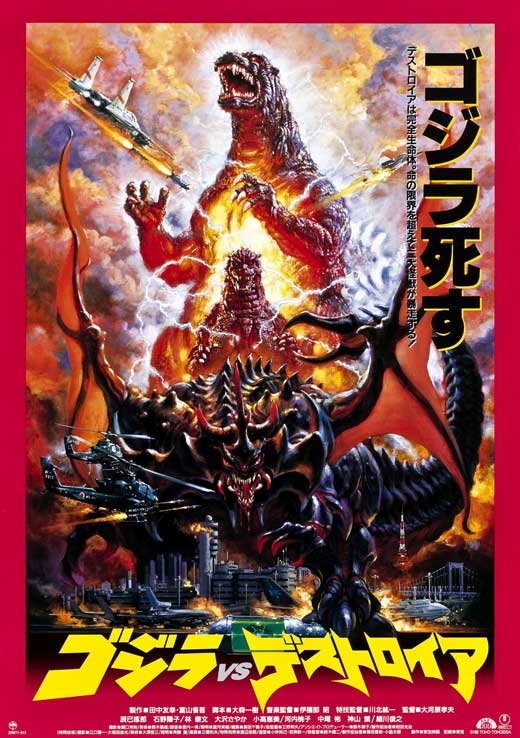
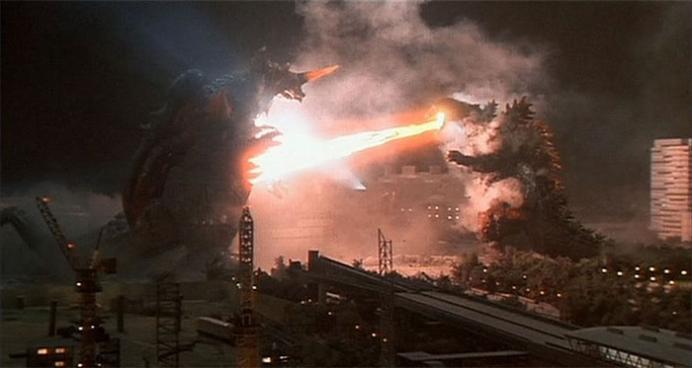
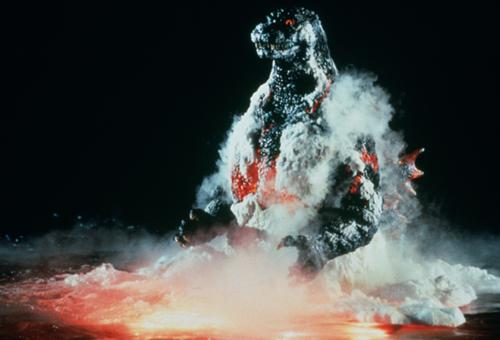




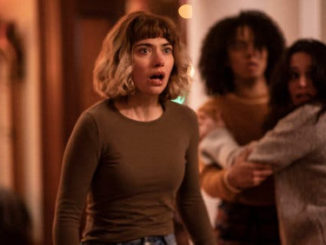
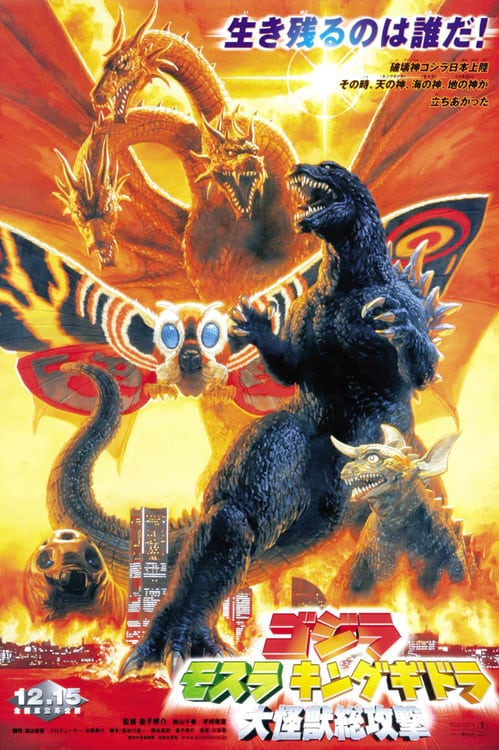

Be the first to comment